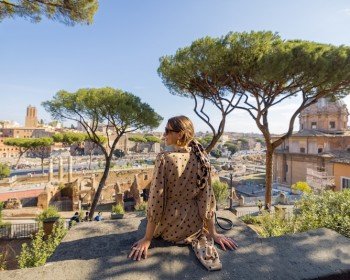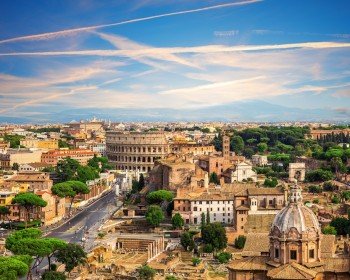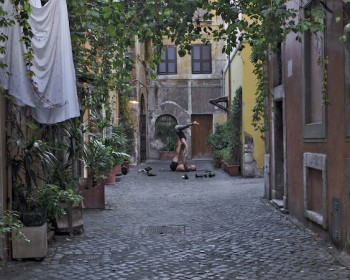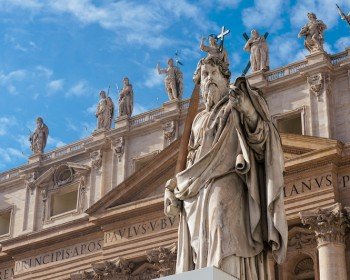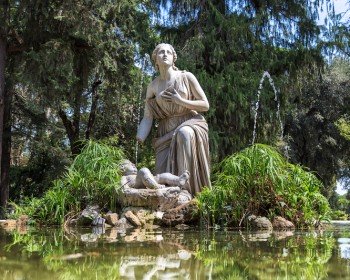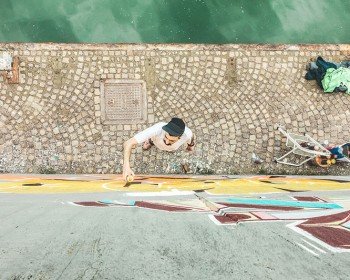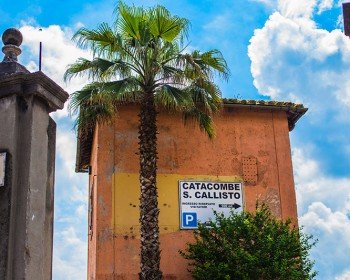It is located on the left bank of the river Tiber, right in front of the Tiber Island, the only island in the part of the river. Rione Sant'Angelo is the eleventh district of Rome and its historic importance derives mainly from the Jewish Ghetto located in its territory. It still remains one of the most evocative and representative districts.
History
Though formerly located outside the Servian Wall – an ancient defensive barrier constructed around the city of Rome in the early 4th century BC – the rione has always had a strategic role. During the Middle Ages, thanks to the Tiber Island’s bridges, Sant’Angelo was the only passage inside the Aurelian walls – built between 271and 275AD they superseded the earlier Servian Wall –. Therefore many artisan’s small shops and baronial houses started to appear. The area went through many changes in the early 20th century.
Discover our -> Vatican Private Tours
What to see in Rione Sant'Angelo
Though a tiny area, rione Sant’Angelo offers many highlights. Let’s find some out together!
- Church of Sant’Angelo in Pescheria
Dating back to 8th century, it is the Catholic church after which the rione is named. “In Pescheria” refers to its location close to the fish market located on the ruins of the ancient Porticus Octaviae. The façade is just a wall made with bricks and its gate incorporates three columns that were part of the Porticus Octaviae. Don’t miss the chance to enter the church and visit St. Andrew’s chapel: you will be amazed by its golden stuccos, frescoes and marble mosaics on the pavement!
- Porticus Octaviae
It is the symbol of the Jewish district. Octavia was Emperor Augustus’ sister, and he dedicated the monument to her when it was rebuilt. The Portico includes the Temples of Jupiter and Juno Regina as well. Formerly it was a place totally devoted to culture, with libraries and museums.
During the Middle Age, it was also the setting for the fish market that lasted until the 19th century. Affixed on the ruins of the Portico, you can still see a marble tablet used as a unit of measurement: all the fishes bigger than the image were donated to magistrates, the others could be sold to the people.
The Great Synagogue of Rome
Built in 1904, the “Tempio Maggiore di Roma”, is the biggest synagogue in Europe, realized using Art Noveau style and elements from Asiatic influence. The oriental shade of its style refers to the origins of the Judaism itself. Exactly in the Synagogue there is the Jewish Museum of Rome, that offers both information and a wide collection of works. It is totally worth visiting!
- Theatre of Marcellus
Built in the closing years of the Roman Republic, it is an ancient open-air theatre. The theatre was ordered by Emperor Augustus in memory of his nephew Marcello and to eternalize him. Here both locals and tourists were able to watch performances of drama and song, but nowadays you can just see two orders of decorated arches creating a portico around the stairs. It is one of the most popular tourist sites!
- Fontana delle Tartarughe
Literally the fountain of turtles, it is located in the middle of Mattei square. It was realized during the 16th century when the construction of the aqueduct was finished and the Aqua Virgo was supplied everywhere in the city. The turtles are not part of the original structure, but were added by Bernini – you can appreciate just a copy of the original turtles, because due to some theft they are hosted in the Capitoline Museums –.
- Ponte Fabricio
It is the oldest bridge in Rome still enduring exactly in its original state. Built in 62 BC it cuts through half of the Tiber river bringing to the Tiber Island – Ponte Cestio is the bridge at the other side of the island –.
It is also known as “the bridge of the four heads”, due to the two marble two-face shaped pillars on the parapet. The story goes that these pillars were realized to honor the four architects charged with the construction of the bridge by Pope Sixtus. Due to their inappropriate behavior they had their head cut off.
Let yourself feel all the fascination of this magic place!
How to get there
You can get to Sant’Angelo by underground: take the B line, the blue one, and get off at Circo Massimo stop, then you will have to walk for almost 10 minutes. From Termini station just take the H bus. To calculate the best route for you just double check on the ATAC website.
Peculiarity
Walking through the Jewish Ghetto it will be like going back in time: you can still see tiny bakeries, small shops and typical restaurants. Some of them cook “Kosher”, a set of Jewish religious dietary laws. Have a culinary break here! Among the most famous dishes, you should taste the “carciofo alla giudia”, a fried artichoke, or special fish soup.
Sant’Angelo is a place in the core of Rome that can still amaze and move you, because of the strong historic impact it hides in every corner.


